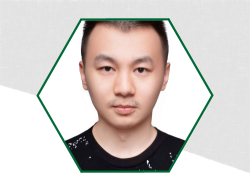Online depth measurement of keyhole during laser welding is of great importance to evaluate the penetration depth and porosity formation of the live process. Optical coherence tomography (OCT) shoots a light probe coaxially with the processing beam into the keyhole, hence being able to provide a direct depth measurement. However, the keyhole intrinsically flows in a highly dynamic mode with a changing shape, the probe could be easily back-reflected multiple time by tilt sidewall rather than going straight to the bottom. It results in a noisy and inaccurate depth measurement. So far, It hinders the potential to precisely predict the penetration depth and diagnose the formation of porosity. To address this issue, the probe is split into multiple fibers, which are then bundled into a core-array fiber and guided parallelly into the laser head, resulting a multiple of interfering pairs captured at the same moment. The 3D profiling of the sidewall of keyhole could be mathematically modeled and reconstructed given multiple constrains on optical path difference caused by multiple reflection. The mathematical models for profiling reconstruction were created and analyzed in terms of the profiling performance and limitations for 4 types of keyhole shapes including tilt sidewall, wine glass, humping, and J-shaped keyhole. A two-core fiber imaging system was built to demonstrate the reconstruction performance on keyhole. It shows a great potential to improve the keyhole imaging precision and increase SNR from the perspective of raw data.
Keywords
- 3D Keyhole Profiling
- Core-Array Fiber
- Laser Welding
- Multiple Reflection
- Optical Coherent Tomography

